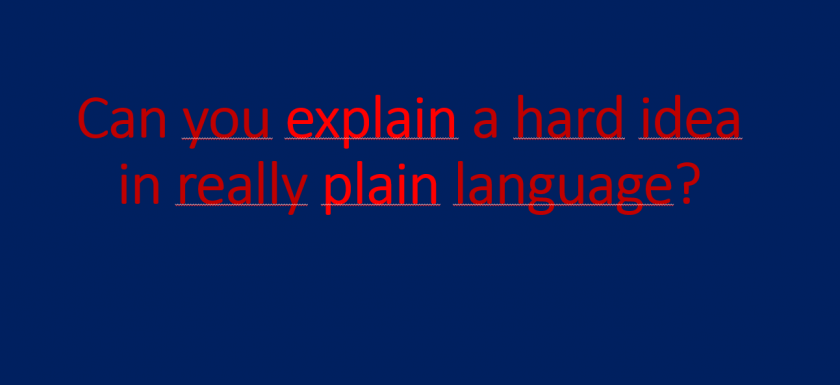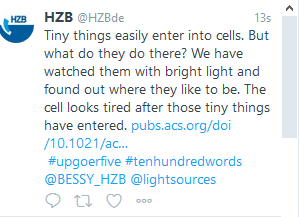
Can you translate the title of your last talk or paper into plain english? Of course you can. But can you do it using only words out of a list of 1000 most common english words? That becomes tricky!
Give it a try. Be generous and creative. The “Splasho”-Editor will help you: just copy the original text into it and edit until the editor is happy.
Example:
„Tiny things easily enter into cells. But what do they do there? We have watched them with bright light and found out where they like to be. The cell looks tired after those tiny things have entered.“
This is the „splasho“ summary of a short text for a broader public on a recent science highlight at BESSY II: a beautiful paper, recently published in ACS Nano (2020) (DOI: 10.1021/acsnano.9b09264) with the title:
“Cells Undergo Major Changes in the Quantity of Cytoplasmic Organelles after Uptake of Gold Nanoparticles with Biologically Relevant Surface Coatings”
About this challenge:
The challenge seems to have been invented by the author of the xkcd comics, Randall Munroe. He explained the Saturn V moon rocket using only the 1,000 most commonly used words in the English language. Because “thousand” is not on that list, it’s actually the “ten hundred” words. His name for the moon rocket was “Up Goer Five.”
Please share your results:
 Please share your results on twitter with the hashtag #tenhundredwords and add our twitter handle @HZBde, and if your work is related to BESSY, please add @HZB_Bessy and @lightsources.
Please share your results on twitter with the hashtag #tenhundredwords and add our twitter handle @HZBde, and if your work is related to BESSY, please add @HZB_Bessy and @lightsources.
If you do not use twitter, we would be happy if you send us your “plain english” versions of your titles of talks or papers, together with the DOI. Just add a comment to this blogpost and we will see it . We will distribute it with the reference to the “real” science paper.
List of links:
Text editor: https://splasho.com/upgoer5/
Word list: https://splasho.com/upgoer5/phpspellcheck/dictionaries/1000.dicin
